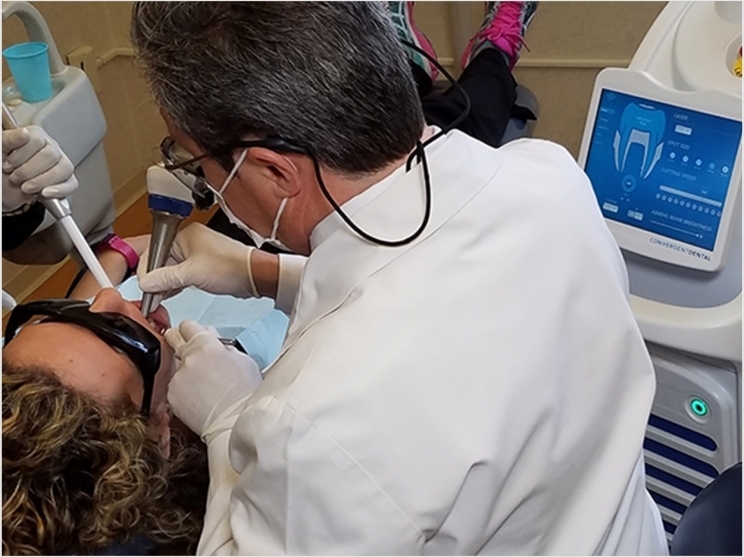
The American Academy of Periodontology (AAP) has published its best evidence consensus (BEC) panel proceedings on laser usage. The proceedings are the result of the AAP’s second BEC meeting, a model of scientific inquiry rooted in the best available published research and expert opinion, the organization reports. They appear in the July 2018 issue of the Journal of Periodontology.
Held in Chicago in February 2017, the meeting assembled a panel of 10 experts to discuss the efficacy of laser usage, either when used alone or as an adjunct to nonsurgical and surgical treatment of periodontitis and peri-implantitis. The experts were selected based on their extensive knowledge of laser therapy and experience in applying lasers to a broad range of clinical situations.
The panel found that when laser treatment is used in addition to mechanical treatment, similar or slightly better clinical outcomes are observed compared to laser usage alone. Current evidence suggests that there is no additional benefit to lasers beyond what is seen with traditional periodontal surgery, the AAP says.
“Lasers are a part of a diverse treatment repertoire, and there are countless reported successful outcomes in their use,” said Steven R. Daniel, DDS, AAP president. “As the profession advances with the adoption and application of these technologies, the Academy is committed to using existing evidence and thoughtful expertise to bridge knowledge gaps and provide insight for responsible, real-world use.”
The BEC model of inquiry utilizes current, high-quality published literature and the expert opinion of periodontal thought leaders to provide guidance on innovative topics for which there is insufficient evidence to arrive at definitive conclusions. The proceedings offer a consensus statement, a commentary, and systematic reviews related to the usage of lasers.
“I encourage all dental professionals to read the laser BEC proceedings carefully as they underscore how crucial scientific evidence is in influencing clinical recommendations,” said Daniel.
“The latest findings are not meant to insinuate that laser usage is more or less beneficial over traditional periodontal therapy or to imply an Academy position on its use in patient care. They simply demonstrate that, in the absence of a critical mass of evidence, all practitioners must rely on their judgement and expert training to make the best possible treatment decisions,” said Daniel.
Related Articles
AAP Updates Periodontal Disease Classifications
AAP Outlines Best Evidence Consensus for CBCT Usage
Use a Laser to Replace a Fractured Solid Zirconia Crown











